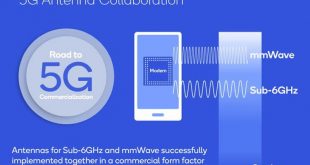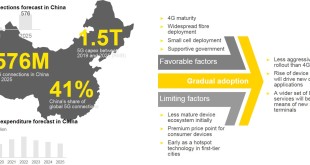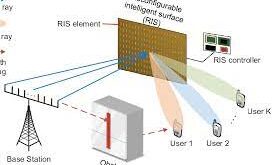In computer network research, network simulation is a technique whereby a software program replicates the behavior of a real network. A network simulator is a software program that can predict the performance of a computer network or a wireless communication network. Since communication networks have become too complex for …
Read More »Communication networks technology trends and Market
A communication network in its simplest form is a set of equipment and facilities to provide service by transfer of information between users located at various locations. Communication networks have evolved from telegraph networks that operated at tenths of bits per second to modern optical systems, which are operated …
Read More »Mobile security
The future of computers and communication lies with mobile devices, such as laptops, tablets and smartphones with desktop-computer capabilities. Their size, operating systems, applications and processing power make them ideal to use from any place with an internet connection. And with the expansion of ruggedized devices, the Internet of Things …
Read More »5G is a game changer for the military
Mobile communications systems have evolved through wireless technology innovation into 2G, 3G, and then 4G to keep pace with ever increasing voice and data traffic. 5G is the latest iteration of cellular technology that is providing seamless coverage, high data rate, low latency, and highly reliable communications. It will increase …
Read More »Antennas and Advanced Antenna Systems (AAS) breakthroughs to accelerate large scale deployments of 5G networks
End-user performance requirements continue to increase, putting high demands on the radio access network (RAN) to deliver increased coverage, capacity and end-user throughput. The antenna is an invaluable segment of any wireless network. Early 2G and 3G systems operated with two receive antennas spaced at least a lambda spacing to …
Read More »Digital Signal Processing (DSP) for wireless communications
The first-generation (1G) cellular wireless mobile system were analog and were based on frequency-division-multiple access (FDMA) technology. The second boost for the cellular industry came from the introduction of the second-generation (2G) digital technology standards, including Global System for Mobile (GSM), IS-136 (Time Division Multiple Access, TDMA), and Personal Digital …
Read More »Global race for 5G for connected homes, autonomous vehicles and drones, smart cities and Military
Mobile communications systems have evolved through wireless technology innovation into 2G, 3G, and then 4G to keep pace with ever-increasing voice and data traffic. Every generation of wireless technology brought many improvements including speed enabling many new applications. 1G was analog cellular. 2G technologies, such as CDMA, GSM, and TDMA, …
Read More »Massive MIMO key to delivering mobile 5G will move to extreme MIMO in 6G
The capacity of a wireless link is generally measured in bits per second per Hertz (b/s/Hz). The methods available to increase this capacity in a traditional Single Input, Single Output (SISO) wireless system are fairly limited: increase the bandwidth, allowing a corresponding increase in the bits per second, or increase …
Read More »Reconfigurable intelligent surface (RIS) or Large Intelligent Surface (LIS) creating an intelligent electromagnetic environment for wireless communications
Reconfigurable intelligent surface (RIS)—known also as intelligent reflecting surface (IRS), and large intelligent surface (LIS)—is a programmable structure that can be used to control the propagation of electromagnetic (EM) waves by changing the electric and magnetic properties of the surface. These elements form a low-profile 2D reflecting or transmission array, …
Read More »Earth stations on moving platforms (ESOMPs)
Satellite communication systems consist of two main segments, the space segment and the earth or ground station. The ground station system coordinates the communication process with satellites in space. A communications satellite is an artificial satellite that relays and amplifies radio telecommunications signals via a transponder; it creates a communication …
Read More » International Defense Security & Technology Your trusted Source for News, Research and Analysis
International Defense Security & Technology Your trusted Source for News, Research and Analysis







